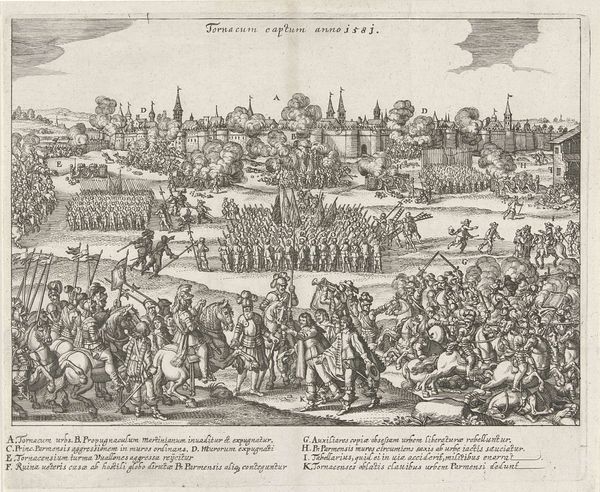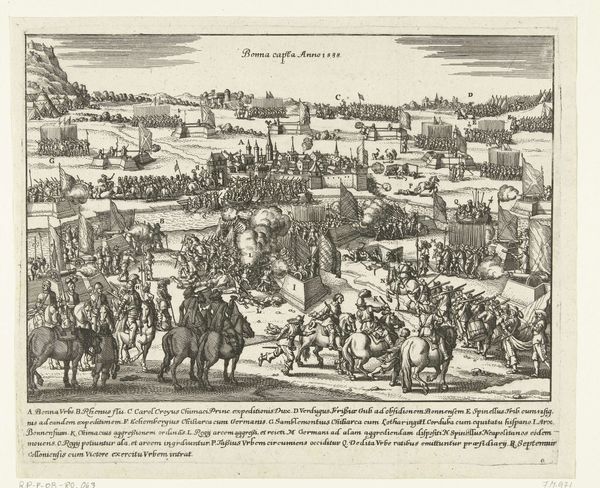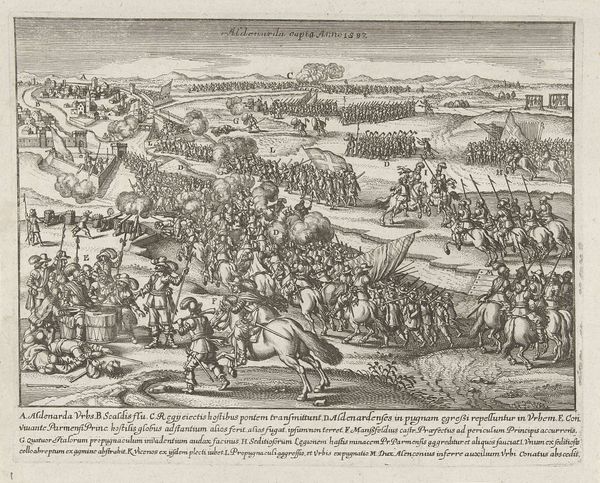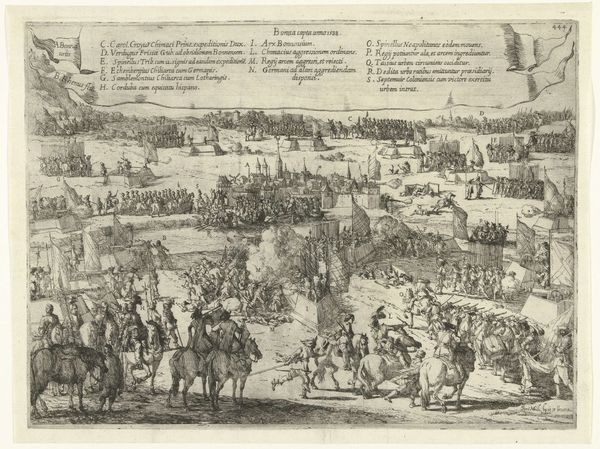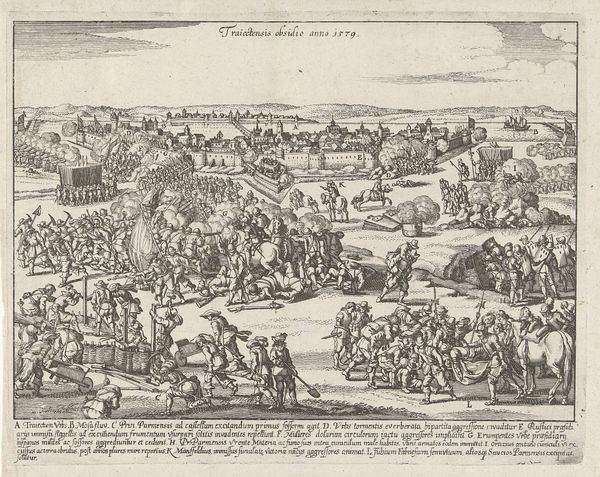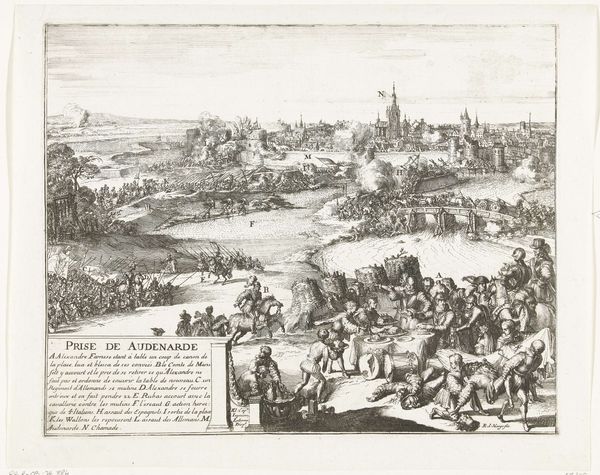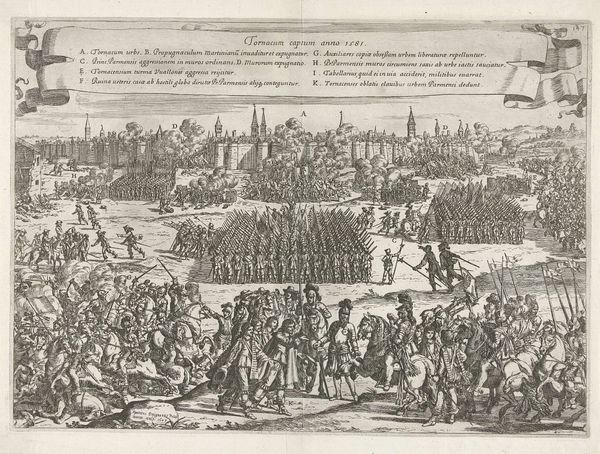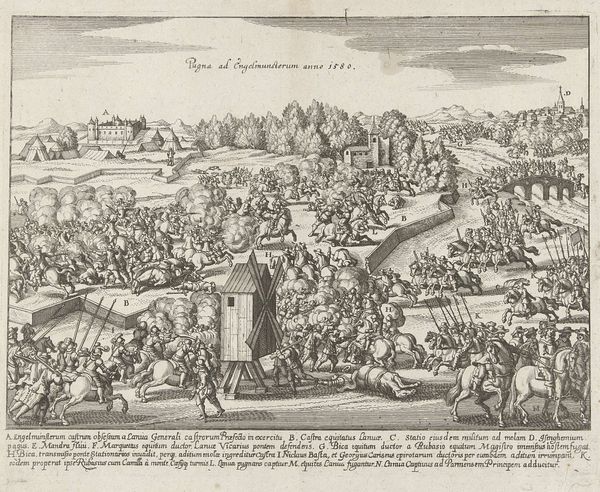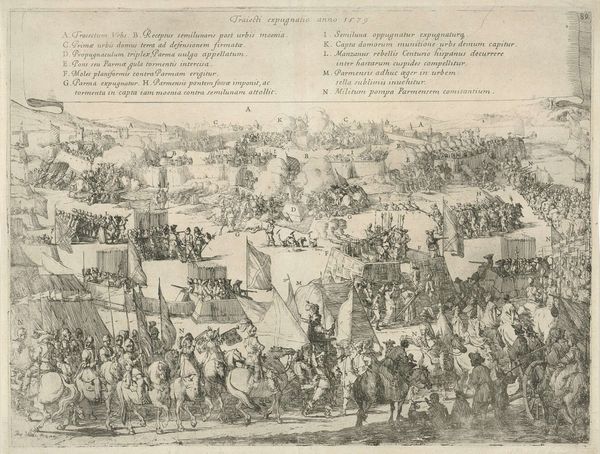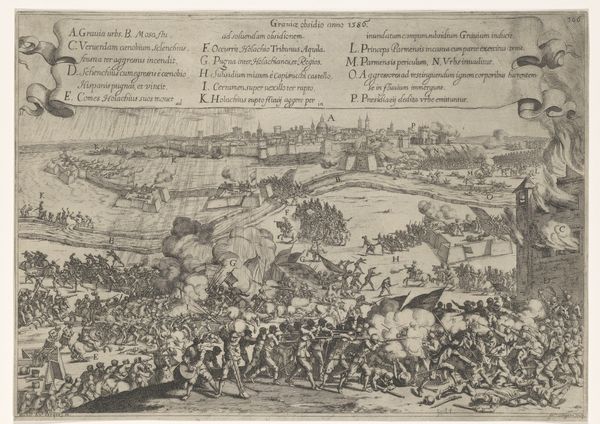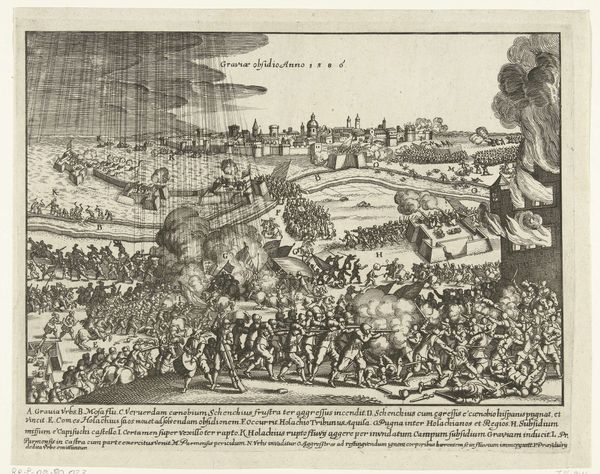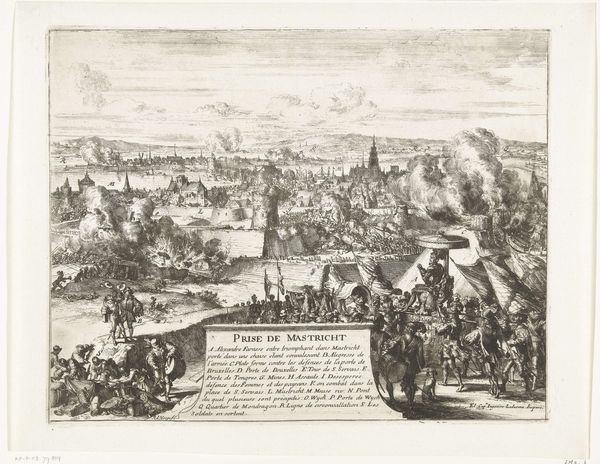
print, etching, engraving
#
medieval
# print
#
pen illustration
#
etching
#
old engraving style
#
landscape
#
geometric
#
line
#
cityscape
#
history-painting
#
engraving
Dimensions: height 220 mm, width 272 mm
Copyright: Rijks Museum: Open Domain
Curator: Looking at this engraving from between 1649 and 1651, titled "Maastricht veroverd door Parma, 1579," I am immediately struck by the incredible detail. It’s attributed to an anonymous artist and held at the Rijksmuseum. The lines seem almost endless, creating this chaotic, energetic cityscape overtaken by military activity. What's your initial reaction? Editor: The sheer density of figures is quite overwhelming! It speaks to a need to document and perhaps even glorify military strength and conquest. Beyond the immediate scene, the way the image is constructed—this etching and engraving technique—seems deliberately aimed at widespread reproduction and dissemination. Think about the labor involved. Curator: Precisely! This wasn't a quick sketch; there was significant planning and technical skill invested. The process is what creates its accessibility. But zooming out, the depicted event itself, the siege of Maastricht in 1579, marked a critical moment in the Eighty Years' War, framing the socio-political narrative. This print would have been a potent piece of propaganda, shaping public opinion. Editor: Propaganda is definitely at play here, and thinking about reception is key. This image isn't just recording history; it's *making* history by constructing a certain version of events. The composition emphasizes Parma's forces, creating a sense of order amidst the chaos of war. What was the experience of consuming it back then? Who could even access and comprehend it? Curator: We can surmise the market would include wealthy merchants, nobles, or governmental entities interested in chronicling and visualizing their victories. Let's also note the deliberate focus on linear details achieved by etching: geometric buildings contrast with rounded organic shapes that constitute the city and terrain. Editor: I am looking at the pen illustration style; there’s a commitment to realism—however idealized—through meticulously rendered detail. It begs questions about the economics of image-making at that time. Who was commissioning works like these, and what was the scale of production? And it's a beautiful contrast—the brutality of warfare expressed through a delicate, painstaking artistic technique. Curator: A beautiful paradox. Examining the materials—the paper, the ink, the printing process—allows us to better understand the socio-economic landscape in which this work was produced and circulated, offering a lens through which we can re-evaluate these historic conflicts. Editor: Agreed. Analyzing this print allows us to access layers of cultural meaning encoded not just in its subject matter but also in the materiality of its production and the mechanics of its distribution and reception.
Comments
No comments
Be the first to comment and join the conversation on the ultimate creative platform.
